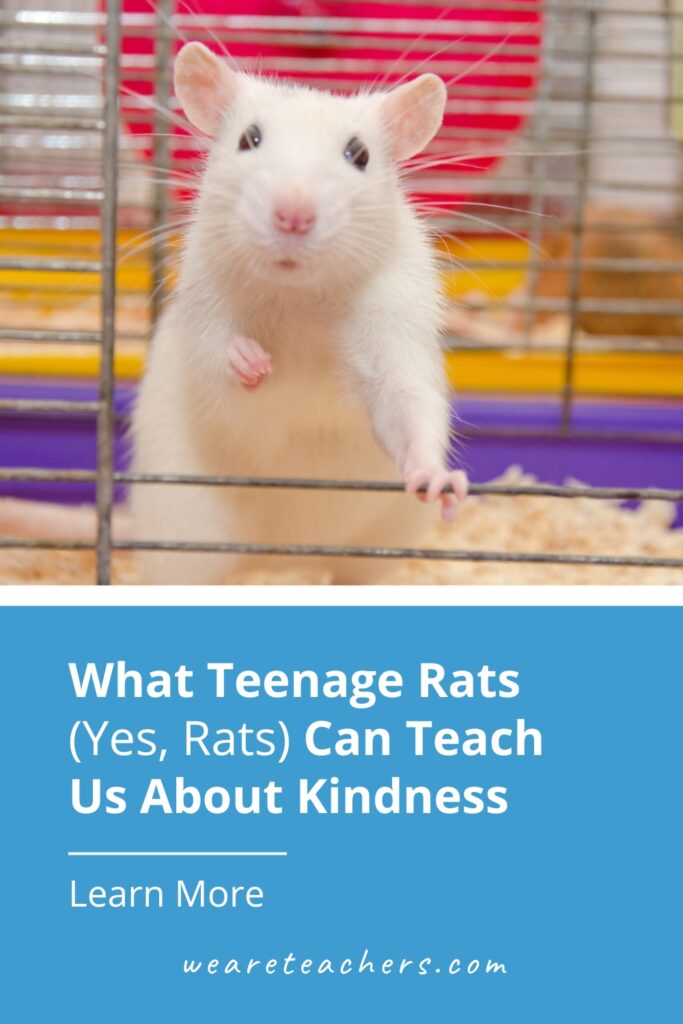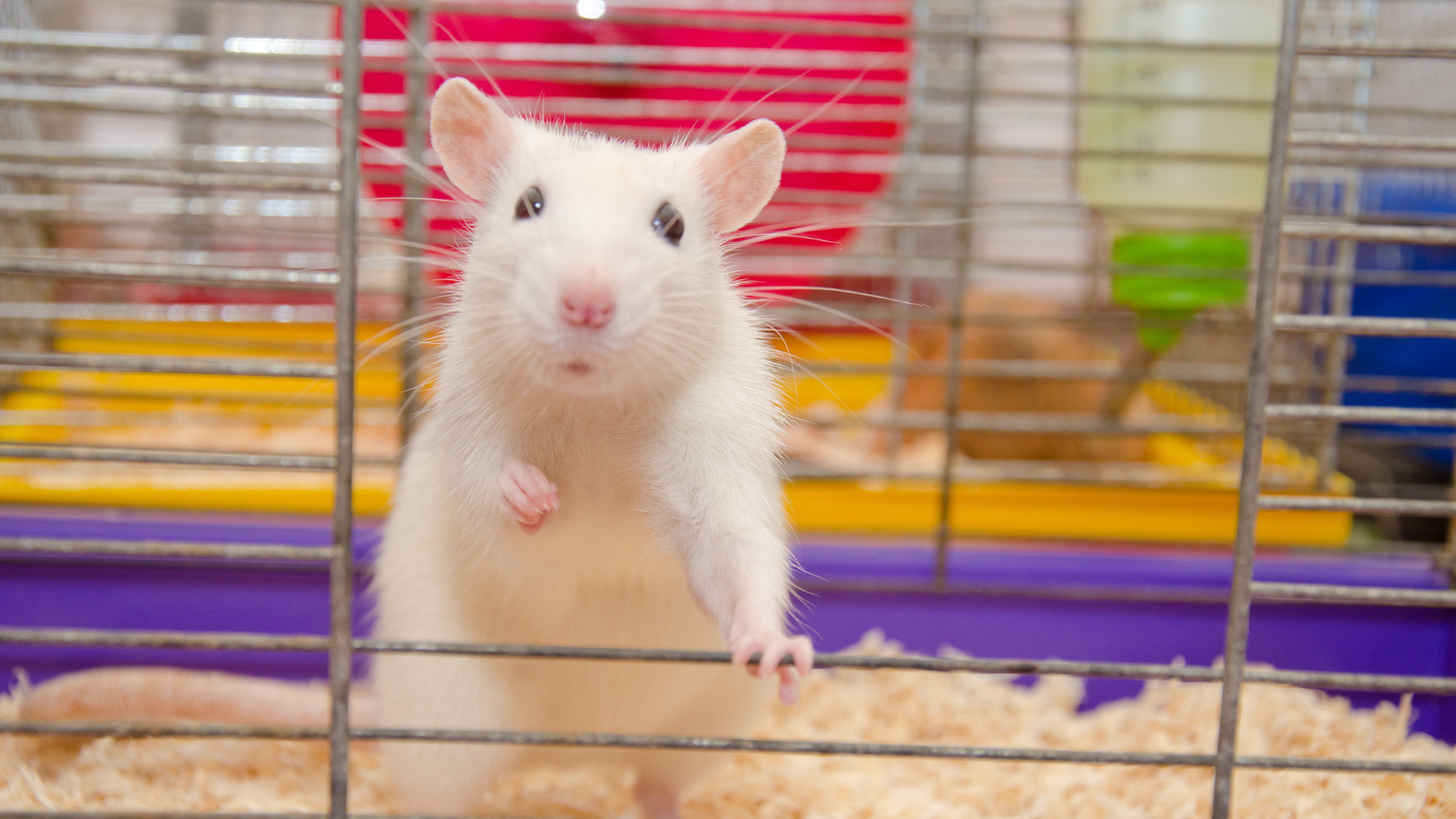We all know that middle schoolers and rats have plenty in common.
They’re sneaky.
They’ll eat anything.
They carry a variety of plagues.
And they provoke a response of fear and disgust in most people who encounter them.
But an experiment reported by Science Direct confirms another similarity: Adolescent rats can be kind, just like adolescent humans.
Stick with me here.
In the experiment, a rat is trapped in a small cage. Scientists put another rat, who knows how to press a bar to open the lock, outside the cage where it can interact with the trapped rat and free it if it chooses.
When the researchers tried this with adult rats, they only freed the rats they recognized as belonging to their in-group or tribe. They left the rats they didn’t know locked in their cages.
Not shocking, right? Rats are a lot like humans—they have a similar in-group bias.
But when scientists tried the experiment with adolescent rats, they had a very surprising result.
The teenage rats were quick to press the bar to open the lock to release any rat.
All the rats. Regardless of in-group status or familiarity.
Now look, I’m not calling the adult rats a bunch of reactionary rat racists. They’ve got more life experience, some of which probably taught them that outsiders are a threat. And maybe, like adult humans, they’ve got more to protect. After all, it’s easy to be brave and kind and generous when you aren’t responsible for the safety of other people … er, rats.
Reasoning aside, I know that I see that same altruism and global concern for others in my middle school students. They love learning about current events and they always have suggestions—often terrible ones—for how we can help in a crisis. They devour historical fiction about oppressive regimes in history because it allows them to imagine themselves as heroes; they would have found a way to beat the bad guys and keep everyone safe.
Don’t get me wrong, middle schoolers are far from perfect.
I have no doubt my seventh grade son would free a stranger rat, but there are also days he’d leave his mama rat trapped in that cage for a while. My students would save the world on principle, but stick Kelsey-who-spread-that-rumor or Aidan-who-stole-my-Takis in a cage, and they might take their sweet time setting them free.
Teenage rats aren’t perfect either. In fact, not all the adolescent rats in the study released the stranger rats.
Interestingly, the teenage rats who didn’t free the others happened to be ones that showed increased activity in their amygdala, the part of the brain responsible for the fight-or-flight response. The part of the brain activated by momentary or chronic stress.
And this tracks, right? It’s harder to be kind and empathetic when you’ve experienced or are currently experiencing trauma.
This altruistic impulse has some great implications for the classroom, since it’s a huge motivator for our teen and tween students.
- Consider incorporating service learning. Kids want to help others. And you don’t even have to go full PBL to leverage this in the classroom. How about this teacher who had her students write essays to help shelter dogs get adopted? Or the hundreds of schools that have made paper cranes to promote peace? My students are currently learning about immigration to prepare for a HUGE holiday giveaway in our city’s immigrant community.
- Empower your students to act on their impulse to help. You might be ready to take on a school-wide writing center for peer tutoring. Or maybe you want to start small and partner with the Life Skills class on a project or assignment. Even within a rigid school structure, you can allow your students opportunities to create greater academic or social freedom for others.
- Reflect on how this fits in with classroom management and relationships. It’s much easier to have grace for challenging students when we remember that their amygdala might be driving the car, so to speak. This doesn’t mean kids who are stressed or traumatized get a free pass to be unkind. It just means that discipline—along with deescalation strategies, calming mind-body exercises, and a combination of other holistic approaches— will be more effective than punishment. Sometimes, the kid who’s hard to handle just needs an opportunity to be a helper.
Middle schoolers are challenging, exhausting, and infuriating every single day. But I love those altruistic little rats, and they never stop giving me hope for the future as they remind me to reach outside my own in-group bias and free all the trapped rats I can find.
For more articles like this, be sure to subscribe to our newsletters.


